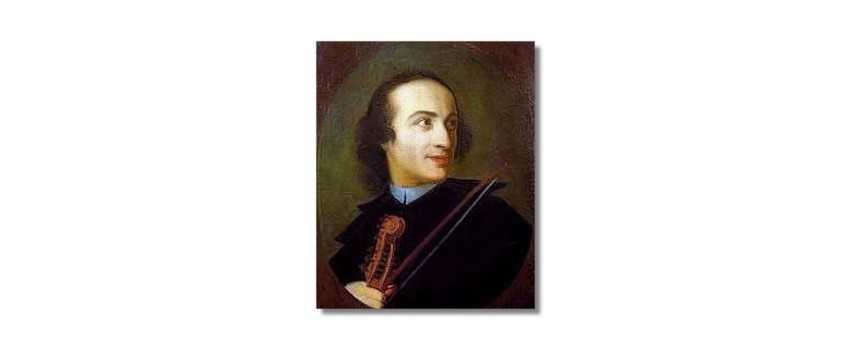Tartini 8 Sonatas For Violin (Masters Music)
Tartini 8 Sonatas for Violin (Masters Music)
Giuseppe Tartini, an Italian violinist and composer, was born on April 8, 1692, in the Republic of Venice during the Baroque period. His musical talent and contributions have left an indelible mark on classical music. Despite facing numerous challenges and controversies throughout his life, Tartini's dedication to his craft and innovative approach to music have secured his place as one of the greatest composers of his time.
Early Life and Musical Training
Tartini's journey into the world of music began with humble origins. While his parents may have initially intended for him to become a Franciscan friar, Tartini's passion for music soon became evident. He received some musical training, and his talent on the violin quickly became apparent. Tartini's formal violin studies commenced at Capodistria's Collegio delle Scuole Pie, where he honed his skills and developed a deep love for the instrument.
Pursuit of Education and Love
In addition to his musical pursuits, Tartini embarked on an academic journey. He studied law at the prestigious University of Padua, where he also delved into the art of fencing. However, tragedy struck when his father passed away in 1710. Following his father's death, Tartini made a controversial decision by marrying Elisabetta Premazore, a woman his father disapproved of due to their social status and age difference.
Controversy and Retreat
Tartini's marriage to Elisabetta led to complications and accusations of abduction from Cardinal Giorgio Cornaro, who favoured Tartini's wife. Fearing punishment, Tartini sought refuge in Assisi's St. Francis convent, where he found solace and continued his musical studies under the guidance of Bohuslav Matj ernohorsk. During this time, Tartini's talent continued to flourish, and his dedication to mastering the violin grew stronger.
Musical Influences and Career
In 1716, Tartini witnessed a captivating performance by Francesco Maria Veracini, which left him inspired and disappointed with his abilities. Determined to improve, Tartini retreated to Ancona, where he secluded himself in a chamber to practice and refine his techniques—this period of intense dedication enabled Tartini to master the use of the bow and elevate his skills to new heights.
Tartini's talent and reputation grew, leading to significant career opportunities. He became the Maestro di Cappella at the Basilica di Sant'Antonio in Padua in 1721, with the flexibility to perform for other institutions. During his time in Padua, Tartini formed a close friendship with Francesco Antonio Vallotti, a fellow composer and thinker, further enriching his musical journey.
Violin Mastery and Teaching
Tartini's prowess on the violin extended beyond his performances. He became the first known owner of a violin crafted by the renowned Antonio Stradivari in 1715. This violin, later known as the Lipinski Stradivarius, was passed down to Tartini's student Salvini, who eventually donated it to the talented Polish composer and violinist Karol Lipinski.
Recognizing the importance of passing on his knowledge and skills, Tartini established a violin school in 1726. This institution attracted aspiring violinists from Europe, solidifying Tartini's influence as a teacher and mentor. His dedication to education and nurturing young talent contributed to the growth and development of violin technique during his era.
Contributions to Music Theory
As Tartini's career progressed, his interest in the theory of harmony and acoustics deepened. From 1750 until his death, he authored several treatizes that explored music theory from a mathematical perspective. These works addressed fundamental problems and provided insights into the intricate relationship between mathematics and music, showcasing Tartini's intellectual curiosity and innovative approach.
Legacy and Final Years
On February 26, 1770, Tartini died in Padua due to gangrene. His contributions to music continue to resonate to this day, with his hometown of Piran, Slovenia, honouring his memory. Tartini Square, formerly the Roman harbour, now boasts a statue in his honour. The Hotel Giuseppe Tartini, housed in one of the old stone warehouses, is a testament to his enduring legacy.
Tartini's compositions, particularly his "Devil's Trill Sonata," remain beloved and challenging in the violin repertoire. According to a legendary account by Madame Blavatsky, Tartini was inspired to write this sonata after dreaming of the Devil playing the violin at the foot of his bed. His extensive work includes numerous violin concertos, sonatas, sacred compositions, and trio sonatas.
Conclusion
Giuseppe Tartini's life and musical journey exemplify the resilience and dedication of a true genius. Tartini's legacy is etched into the annals of music history from his humble beginnings to his rise as a renowned violinist and composer. His innovative approach to music theory and his unparalleled skills on the violin continue to inspire and captivate generations of musicians and music enthusiasts worldwide.

Tartini 8 Sonatas for Violin (Masters Music)
Tartini Concerto in D min with Cadenza for Violin (IMC)
Tartini Sonata in G min 'Didone abbandonata' for Violin (SME)
The Devil's trills for Violin and Piano by G.Tartini (Master Music)
Giuseppe Tartini (1692-1770) is best known for the Devil's Trill Sonata, but he composed many concertos and sonatas for strings, especially the violin. The 'Sonata in D Major for Solo Violin' is a technically demanding yet precise work, featuring slow movements like the Andante cantabile and the Largo section titled "TASSO," based on a Venetian gondola song. The playful Minuet reflects the post-Baroque spirit, while the Allegro assai combines intense and sentimental passages. An ambiguous movement is repeated after the Minuet, completing the structure of the sonata.